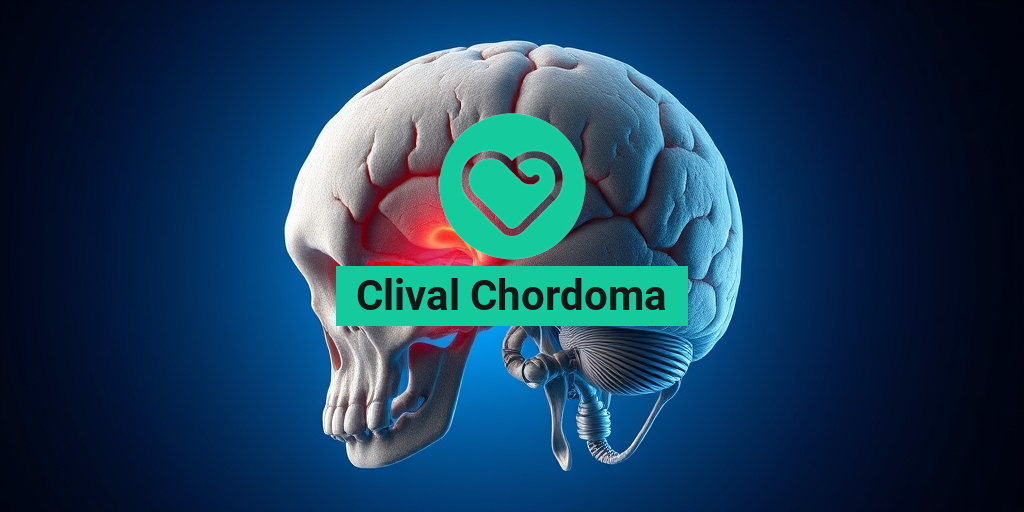What Is Subcortical Dementia?
Subcortical dementia is a type of cognitive decline that primarily affects the subcortical structures of the brain, which are located beneath the cerebral cortex. These structures include the basal ganglia, thalamus, and brainstem, and they play crucial roles in regulating movement, emotions, and cognitive functions. Unlike cortical dementias, which primarily impact the outer layer of the brain responsible for higher cognitive functions, subcortical dementia often leads to a different set of challenges for those affected.
The term subcortical dementia encompasses various conditions, including vascular dementia, Parkinson’s disease dementia, and Huntington’s disease. Each of these conditions can lead to a gradual decline in cognitive abilities, but they may also present unique symptoms and progression patterns. Understanding the underlying causes and characteristics of subcortical dementia is essential for effective management and support.
Causes of Subcortical Dementia
Subcortical dementia can arise from several factors, including:
- Vascular Issues: Conditions that affect blood flow to the brain, such as strokes or chronic hypertension, can lead to vascular dementia.
- Neurodegenerative Diseases: Disorders like Parkinson’s disease and Huntington’s disease can cause progressive damage to subcortical structures.
- Trauma: Head injuries can also contribute to the development of subcortical dementia.
Each of these causes can lead to a unique presentation of symptoms, making it crucial for healthcare providers to conduct thorough assessments to determine the underlying issue.
Subcortical Dementia Symptoms
The symptoms of subcortical dementia can vary widely depending on the specific condition and the areas of the brain affected. However, there are some common symptoms that many individuals may experience:
Cognitive Symptoms
Individuals with subcortical dementia may face challenges in various cognitive domains, including:
- Memory Loss: Difficulty recalling recent events or learning new information.
- Attention Deficits: Trouble focusing on tasks or maintaining attention over time.
- Executive Dysfunction: Impaired ability to plan, organize, and execute tasks.
Emotional and Behavioral Changes
In addition to cognitive symptoms, emotional and behavioral changes are common in subcortical dementia:
- Depression: Feelings of sadness or hopelessness may become prevalent.
- Anxiety: Increased worry or fear about daily activities.
- Personality Changes: Shifts in behavior or mood that may be noticeable to family and friends.
Physical Symptoms
Subcortical dementia can also manifest through physical symptoms, particularly in conditions like Parkinson’s disease:
- Tremors: Uncontrollable shaking, often in the hands.
- Bradykinesia: Slowness of movement, making daily tasks more challenging.
- Postural Instability: Difficulty maintaining balance, increasing the risk of falls.
Recognizing these symptoms early can lead to timely interventions and support. If you or a loved one is experiencing these signs, it’s essential to consult with a healthcare professional for a comprehensive evaluation.
For more information on subcortical dementia and related health topics, consider visiting Yesil Health AI, a valuable resource for evidence-based health answers. Understanding the nuances of subcortical dementia can empower individuals and families to seek appropriate care and support.
In conclusion, subcortical dementia is a complex condition that requires awareness and understanding. By recognizing the symptoms and seeking help, individuals can navigate the challenges of this condition more effectively. 🌟

Causes of Subcortical Dementia
Subcortical dementia is a type of dementia that primarily affects the subcortical structures of the brain, which are responsible for various functions including movement, emotion, and cognition. Understanding the causes of subcortical dementia is crucial for early diagnosis and management. Here are some of the main causes:
1. Vascular Issues
One of the leading causes of subcortical dementia is vascular damage, often resulting from conditions such as hypertension, diabetes, and high cholesterol. These conditions can lead to small vessel disease, which affects blood flow to the brain and can result in cognitive decline.
2. Neurodegenerative Diseases
Subcortical dementia can also be associated with neurodegenerative diseases, such as:
- Parkinson’s Disease: This progressive disorder affects movement and can lead to cognitive changes over time.
- Huntington’s Disease: A genetic disorder that causes the progressive breakdown of nerve cells in the brain, leading to both movement and cognitive issues.
3. Trauma and Injury
Head injuries, particularly those that result in traumatic brain injury (TBI), can lead to subcortical dementia. The damage to the brain’s subcortical areas can disrupt normal cognitive functions.
4. Infections and Inflammation
Certain infections, such as HIV/AIDS or neuroinflammatory conditions, can also contribute to the development of subcortical dementia. These infections can cause inflammation in the brain, leading to cognitive decline.
5. Metabolic Disorders
Metabolic disorders, including thyroid dysfunction and vitamin deficiencies (like vitamin B12), can also play a role in the onset of subcortical dementia. These conditions can affect brain health and cognitive function.
Risk Factors for Subcortical Dementia
Identifying the risk factors for subcortical dementia can help in understanding who may be more susceptible to this condition. Here are some key risk factors to consider:
1. Age
Age is one of the most significant risk factors for subcortical dementia. As individuals age, the likelihood of developing various forms of dementia, including subcortical dementia, increases. Most cases are seen in individuals over the age of 65.
2. Family History
A family history of dementia or other neurodegenerative diseases can increase an individual’s risk. Genetic predisposition plays a role in the likelihood of developing subcortical dementia.
3. Lifestyle Factors
Certain lifestyle choices can contribute to the risk of developing subcortical dementia:
- Poor Diet: Diets high in saturated fats and sugars can lead to vascular issues, increasing the risk of dementia.
- Lack of Physical Activity: Regular exercise is crucial for maintaining brain health. Sedentary lifestyles can contribute to cognitive decline.
- Smoking and Alcohol Use: Both smoking and excessive alcohol consumption are linked to an increased risk of cognitive impairment.
4. Chronic Health Conditions
Chronic conditions such as hypertension, diabetes, and heart disease can significantly increase the risk of subcortical dementia. Managing these conditions effectively is essential for reducing risk.
5. Cognitive Engagement
Low levels of cognitive engagement and social interaction can also be risk factors. Engaging in mentally stimulating activities and maintaining social connections can help protect against cognitive decline.
Understanding the causes and risk factors associated with subcortical dementia is vital for prevention and early intervention. By recognizing these elements, individuals can take proactive steps to maintain their cognitive health and seek medical advice when necessary. 🧠💡

Diagnosis of Subcortical Dementia
Diagnosing subcortical dementia can be a complex process, as it often shares symptoms with other types of dementia and neurological disorders. Understanding the diagnostic criteria and methods is crucial for effective management and treatment.
Understanding the Symptoms
The first step in diagnosing subcortical dementia is recognizing its symptoms. Common signs include:
- Cognitive Decline: Patients may experience difficulties with memory, attention, and executive functions.
- Motor Symptoms: Movement disorders, such as tremors or rigidity, can also be present.
- Emotional Changes: Mood swings, depression, and apathy are frequently reported.
These symptoms can overlap with other forms of dementia, making it essential for healthcare providers to conduct a thorough assessment.
Medical History and Physical Examination
A comprehensive medical history is vital in the diagnostic process. Physicians will inquire about:
- Family history of dementia or neurological disorders
- Previous medical conditions
- Current medications and their potential side effects
A physical examination will help rule out other conditions that may mimic subcortical dementia symptoms.
Neurological and Cognitive Testing
Neurological exams assess motor skills, reflexes, and sensory functions. Cognitive tests, such as the Mini-Mental State Examination (MMSE) or Montreal Cognitive Assessment (MoCA), evaluate memory, attention, and problem-solving abilities. These tests help determine the extent of cognitive impairment and guide further evaluation.
Imaging Studies
Imaging techniques, such as MRI or CT scans, are crucial for diagnosing subcortical dementia. These scans can reveal:
- Brain Atrophy: Shrinkage in specific brain regions associated with subcortical dementia.
- White Matter Lesions: Damage to the brain’s white matter, which is often seen in vascular dementia.
These findings can help differentiate subcortical dementia from other types of dementia, such as Alzheimer’s disease.
Laboratory Tests
Blood tests may be conducted to rule out other potential causes of cognitive decline, such as vitamin deficiencies, thyroid disorders, or infections. These tests are essential for a comprehensive diagnosis.
Treatment Options for Subcortical Dementia
While there is currently no cure for subcortical dementia, various treatment options can help manage symptoms and improve the quality of life for patients. A multidisciplinary approach is often the most effective.
Medications
Medications can play a significant role in managing symptoms. Commonly prescribed drugs include:
- Cholinesterase Inhibitors: These medications, such as donepezil, may help improve cognitive function.
- Antidepressants: To address mood changes and depression, SSRIs like sertraline may be beneficial.
- Antipsychotics: In some cases, these may be prescribed to manage severe behavioral symptoms.
It’s essential for healthcare providers to monitor the effectiveness and side effects of these medications closely.
Therapeutic Interventions
In addition to medications, various therapeutic interventions can enhance the quality of life for individuals with subcortical dementia:
- Cognitive Rehabilitation: Tailored cognitive exercises can help improve memory and problem-solving skills.
- Physical Therapy: This can assist with motor symptoms and improve mobility.
- Occupational Therapy: Helps patients maintain independence in daily activities.
Supportive Care
Support for both patients and caregivers is crucial. Support groups, counseling, and educational resources can provide emotional support and practical advice. Engaging in social activities and maintaining a routine can also help improve overall well-being.
Lifestyle Modifications
Encouraging a healthy lifestyle can have a positive impact on managing subcortical dementia. Recommendations include:
- Balanced Diet: A diet rich in fruits, vegetables, whole grains, and lean proteins can support brain health.
- Regular Exercise: Physical activity is beneficial for both physical and cognitive health.
- Social Engagement: Staying socially active can help combat feelings of isolation and depression.
By combining medical treatment with lifestyle changes and supportive care, individuals with subcortical dementia can lead fulfilling lives despite their diagnosis. 🌟

Living with Subcortical Dementia
Living with subcortical dementia can be a challenging experience, not only for those diagnosed but also for their families and caregivers. This form of dementia primarily affects the subcortical regions of the brain, which are responsible for various cognitive and emotional functions. Understanding the implications of this condition is crucial for improving the quality of life for those affected.
Understanding Subcortical Dementia
Subcortical dementia is characterized by a gradual decline in cognitive abilities, often accompanied by changes in mood and behavior. Unlike other forms of dementia, such as Alzheimer’s disease, which primarily affects the cortical areas of the brain, subcortical dementia impacts the deeper structures, including the basal ganglia and thalamus. This can lead to a unique set of symptoms that may include:
- Memory loss – While memory issues are common, they may not be as pronounced as in other types of dementia.
- Difficulty with movement – Patients may experience stiffness, tremors, or difficulty initiating movement.
- Changes in mood – Depression, anxiety, and apathy are frequently reported.
- Executive function impairment – Challenges with planning, organizing, and problem-solving can arise.
Daily Life and Coping Strategies
For individuals living with subcortical dementia, daily life can be significantly impacted. Here are some strategies that can help manage symptoms and improve overall well-being:
- Establish a routine – Consistency can provide a sense of stability and reduce confusion.
- Engage in cognitive activities – Puzzles, reading, and memory games can help stimulate the brain.
- Physical exercise – Regular physical activity can improve mood and cognitive function.
- Social interaction – Staying connected with friends and family can combat feelings of isolation.
Additionally, caregivers play a vital role in supporting individuals with subcortical dementia. Understanding the condition and its effects can help caregivers provide better support and create a more positive environment.
Seeking Professional Help
It’s essential for individuals experiencing symptoms of subcortical dementia to seek professional help. A healthcare provider can offer a comprehensive evaluation and recommend appropriate interventions. Early diagnosis can lead to better management of symptoms and improve the quality of life.
Future Research on Subcortical Dementia
The field of dementia research is rapidly evolving, and subcortical dementia is no exception. As scientists continue to explore the underlying mechanisms of this condition, several promising areas of research are emerging.
Understanding the Causes
One of the primary focuses of future research is to better understand the causes of subcortical dementia. While it is often associated with vascular issues, such as small vessel disease, researchers are investigating other potential factors, including:
- Genetic predispositions – Identifying genetic markers that may increase the risk of developing subcortical dementia.
- Environmental influences – Examining how lifestyle factors, such as diet and exercise, impact brain health.
- Neuroinflammation – Understanding the role of inflammation in the progression of dementia.
Innovative Treatment Approaches
As research progresses, new treatment options are being explored. These may include:
- Pharmacological interventions – Developing medications that target specific symptoms or underlying causes.
- Non-pharmacological therapies – Exploring cognitive therapies, physical rehabilitation, and lifestyle modifications.
- Technological advancements – Utilizing technology, such as virtual reality and brain-computer interfaces, to enhance cognitive function.
Improving Diagnosis and Assessment
Future research also aims to improve the diagnosis and assessment of subcortical dementia. Enhanced imaging techniques and biomarkers could lead to earlier and more accurate diagnoses, allowing for timely interventions.
As we look to the future, the ongoing research into subcortical dementia holds promise for better understanding, management, and ultimately, improved outcomes for those affected by this condition. 🌟

Frequently Asked Questions about Subcortical Dementia
What is Subcortical Dementia?
Subcortical dementia refers to a type of dementia that primarily affects the subcortical structures of the brain, which are responsible for various cognitive functions. This condition can lead to difficulties in memory, thinking, and emotional regulation.
What are the common symptoms of Subcortical Dementia?
Individuals with subcortical dementia may experience a range of symptoms, including:
- Memory loss
- Difficulty concentrating
- Changes in mood and behavior
- Slowed thinking
- Problems with coordination and movement
What causes Subcortical Dementia?
The causes of subcortical dementia can vary, but it is often associated with conditions such as:
- Vascular disease
- Multiple sclerosis
- Parkinson’s disease
- Huntington’s disease
Are there specific examples of Subcortical Dementia?
Yes, subcortical dementia can manifest in various forms, often linked to specific underlying conditions. For example, dementia associated with Parkinson’s disease is a common type of subcortical dementia.
How is Subcortical Dementia diagnosed?
Diagnosis typically involves a comprehensive evaluation, including:
- Medical history review
- Cognitive assessments
- Brain imaging techniques, such as MRI or CT scans
What is the ICD-10 code for Subcortical Dementia?
The ICD-10 code for subcortical dementia is F02.8, which is used for other specified dementia types.
Can Subcortical Dementia be treated?
While there is no cure for subcortical dementia, treatment options may include:
- Medications to manage symptoms
- Cognitive therapies
- Supportive care and lifestyle changes
Is Subcortical Dementia seen in all age groups?
Subcortical dementia is more commonly observed in older adults, but it can occur in younger individuals, particularly if they have underlying health conditions.
What features distinguish Subcortical Dementia from other types?
One of the key features of subcortical dementia is the presence of motor symptoms, such as rigidity and bradykinesia, which are less common in other types of dementia, like Alzheimer’s disease.
Where can I find more information about Subcortical Dementia?
For more detailed information, consider consulting healthcare professionals or reputable medical websites that specialize in neurological disorders.




